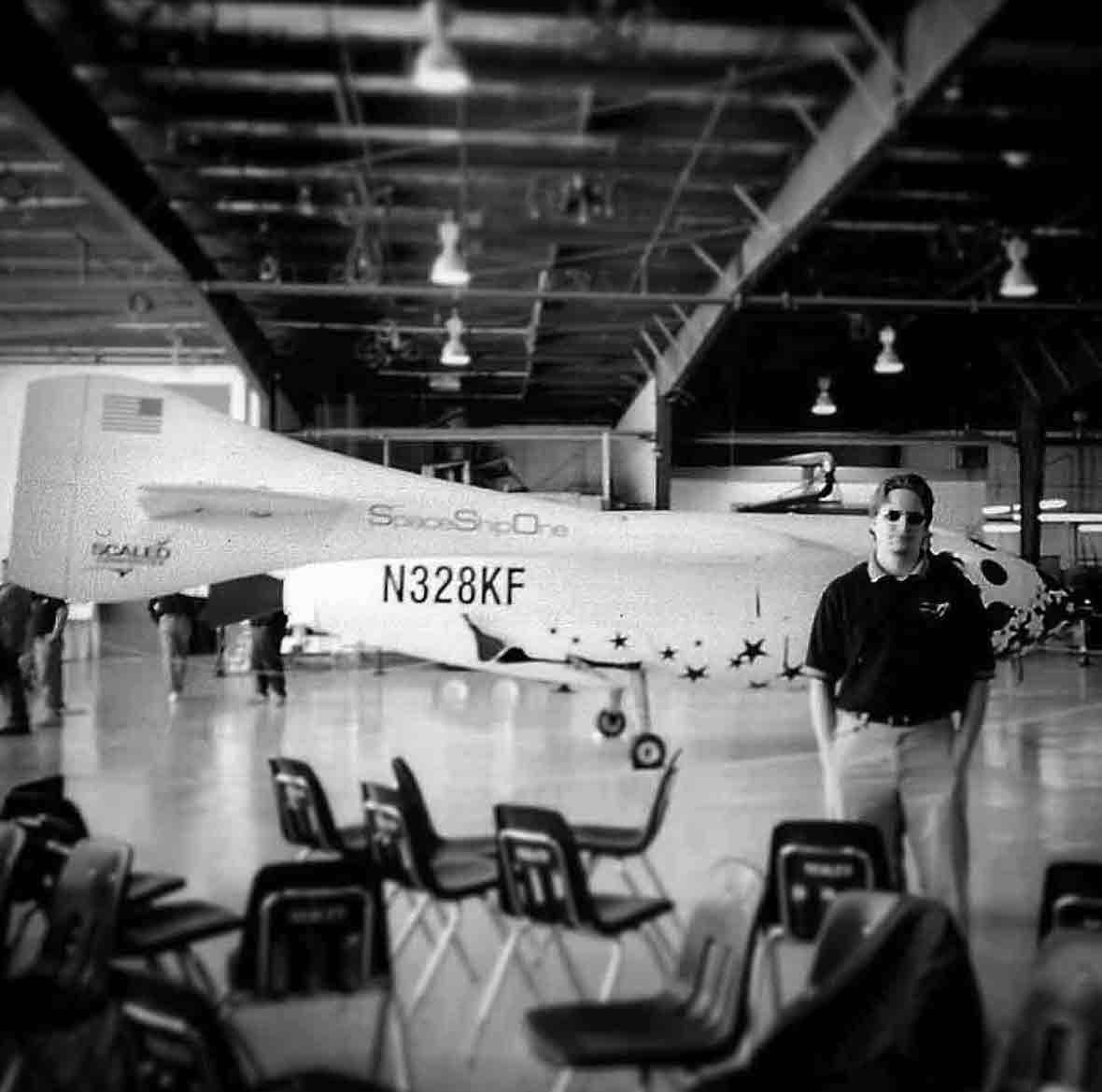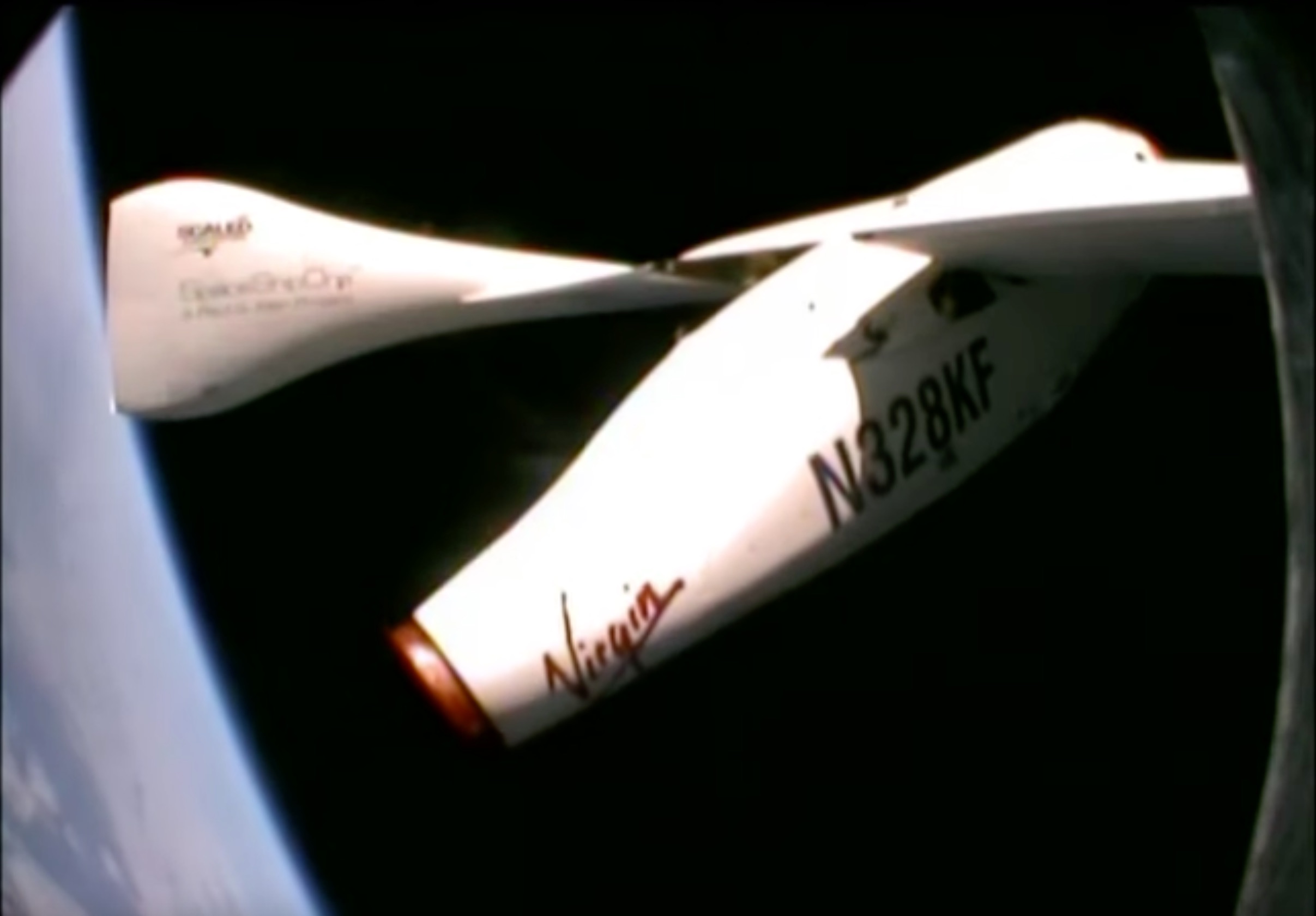About me…

TL;DR
Highly versatile, team-oriented technical leader with a diverse range of skills and experiences to drive complex issues to resolution. Passion for software engineering innovation and joy of learning have allowed contributions in multiple industries over the last 15+ years. Work on video games, life-critical spacecraft, nation-state level cybersecurity, and novel AI-augmented human-computer interface systems has been part of the journey. Able to communicate effectively and work optimally with multidisciplinary teams. Craving opportunities to learn from other experts, and taking great pleasure mentoring future brilliant technical leaders.
The key highlight of my career (so far!) was working on Burt Rutan’s SpaceShipOne , the Ansari X Prize-winning sub-orbital spacecraft financed by Paul Allen (co-founder of Microsoft) — a vehicle that was spawned from the forward-leaning, high-risk “X-plane” era. My primary area of responsibility was the avionics software, including the Flight Director Display (FDD), flight simulator, and vehicle data acquisition systems. I collaborated extensively with aerospace engineers and test pilots to design an innovative and intuitive user interface, incorporating unique symbology tailored for an unconventional spacecraft.
I have assumed several key technical leadership roles such as Technical Director, Research Director, Principal Investigator, and VP of Software Engineering. My technical leadership skills have been honed over years of leading teams through full cycles of research, development, and execution, yielding both successes and valuable lessons from failures. The culmination of these experiences have made me well-equipped to solve uniquely challenging problems, while maintaining a happy and productive team.
I believe effective leadership stems from deep comprehension of the domain one is guiding. This conviction drives me to maintain an ethic of continuous learning and hands-on involvement in the intricate details of the work, ensuring I remain closely connected to the core aspects of the problem domain. A good leader gets their hands dirty without getting in the way!
My passion for exploration, and experimentation extends beyond computer science in my personal pursuits of projects and hobbies. I am a private pilot and experimental aircraft builder .
How I became a computer nerd…
As a kid, I was very lucky to have a tech-savvy father that enjoyed science and technology. I was exposed to airplanes, computers and electronics since I could remember. While my father’s work focused on mainframes, he spent his free time authoring computer games and generating fractal visualizations. Witnessing his joy, I became captivated by computer games and started following influential figures like John Carmack and other pioneers in computer games and graphics. Not only did I enjoy playing games, I also had a strong desire to create them!
My coding journey began in the late 80s with BASIC on my dad’s TI-99 . In fifth grade, we received a brand new C64 in the classroom, and my ability to make it “do cool things” led to being selected for an advanced youth computer science course with other young computer enthusiasts located throughout the region. I happily embraced being allowed to skip regular classes to spend time with fellow nerds in a well-equipped computer lab at the high school.
In the early 90s, I acquired my own PC, a second-hand Tandy 1000 TX . My father supplied me with Borland Turbo Pascal and Turbo C, which I used to cut my teeth on data structures and algorithms. As a high school sophomore, my computer enthusiast buddies and I successfully advocated and started an AP Pascal course, a rarity in our rural area. Our growing group was also able to convince our high school to provide new hardware, a dedicated lab, and official course material. The new lab featured Mac SEs, and we coded in Object Pascal, a more pleasant experience than the monochrome command lines of the day. My interest in “visual programming” sparked when I got my hands on Borland Delphi , an innovative environment with the “Visual Component Library” and a blazing-fast compiler. Delphi was a revolutionary programming environment that deeply fascinated me and affected my thinking on how programming could be done in the future.
Like many of my ilk, I love working on personal projects, acquiring new skills, and exploring various computer science topics. The exhilarating feeling when things “click” motivates me to delve deeper into computer science and other fields. Like my father, I am an autodidact and firm believer in lifelong learning. Always Be Learning!
Bootstraps…
My shared passion for games and cutting-edge graphics programming led me to form friendships with talented game programmers and artists who aimed to develop the next-generation game engine. Thus, in early 2000, I relocated to Los Angeles to establish a startup called VirtueArts.
During that time, creating a game was primarily driven by hard-core, low-level programmers with a deep understanding of advanced mathematics. Many very creative individuals found it challenging to contribute directly to the design, aesthetics, and gameplay because they lacked advanced coding skills. This condition often resulted in bottlenecks to timely game releases. Solving this problem became our primary goal, leading us to design and develop a groundbreaking game engine from scratch. It featured an intuitive authoring environment based on rapid-application development (RAD) and WYSIWYG methodologies inspired by Borland Delphi and Visual Basic, years before the emergence of Unreal and Unity. Our engine enabled a broader range of individuals with unique skill sets to collaborate much more effectively.
We built a remarkable technology that caught the attention of prominent game developers and game hardware manufacturers. But, regrettably, due to our youthful inexperience, and the cut-throat world of the game making business, some poor decisions were made and critical opportunities missed that could have resulted in a better outcome. Unfortunately, learning sometimes comes the hard way. Always Be Learning!
Tier One…
The “Rutan Voyager” was my initiation to Burt Rutan. The “Voyager” was the first aircraft to fly non-stop around-the-world without refueling, including two passes over the Equator as opposed to shorter superficial “circumnavigations” circling the North or South Pole. As a young, avid aerospace enthusiast, I studied Burt’s groundbreaking aircraft designs like the VariEze , Quickie , Boomerang , and Beechcraft Starship .
Fast-forward to 2002… I get a call out of the blue asking if I would be interested in a job located at a windy, high desert trucker town called Mojave, CA, with a small outfit called Scaled Composites? Uhhh, you’re joking?! A couple of weeks later I found myself on a commute from LA to Mojave. It seemed like I was on the path to fulfilling my childhood dream of working on the next Rutan aircraft!
On my first day, bright-eyed, bushy-tailed and ready to start working on “airplane stuff,” Burt pulled me into a meeting where he revealed everything that he had been planning for over a decade. He informed me that I would be collaborating with a group of test pilots and aeronautical engineers on the “Tier One” program to develop custom spacecraft avionics, ground control, and flight simulation software systems for WhiteKnightOne and SpaceShipOne!
Working with Burt Rutan and the remarkable Tier One team was nothing short of mind-blowing! It was a unicorn factory of brilliant people motivated to get really cool shit done. It was an incredible honor to be part of Rutan’s visionary journey and contribute to winning the Ansari X Prize competition. Pioneers like Burt ignited my passion for aerospace and flight at a young age, driving me to jump into flying sailplanes at the age of 14, and why I’m currently building my own airplane !

– Brian Binnie , SpaceShipOne test pilot (RIP)
Science and Research…
After Scaled, I had the opportunity to work on thrilling research initiatives in collaboration with DARPA and other Department of Defense (DoD) organizations. These projects delved into advanced simulation, cyber warfare, and artificial intelligence. Throughout this period, I had taken on various roles, including technical leader, researcher, and manager, holding positions such as Technical Director, Research Director, and Principal Investigator (PI). As a PI, I played a key role in developing, and successfully deploying a cyber command and control (C2) platform currently utilized across the DoD to safeguard our nation’s critical assets from nation-state cyber threats.
Today…
Currently, I find myself immersed in a venture that is expanding my comfort zone into an immensely intriguing field, one that I have been interested in for a very long time: neuroscience. At Optios, I have the privilege of working alongside an exceptional group of brilliant scientists and engineers. Together, we are at the forefront of creating cutting-edge “neuro-feedback” applications that enhance and optimize the brain’s original “software.” This exploration into the intricacies of the brain opens up a new world of possibilities and fuels my passion for continuous growth and discovery.
Please see my Portfolio to learn about the projects I’ve worked on.
I’m always open to learning about exciting opportunities. Please see my resume here .